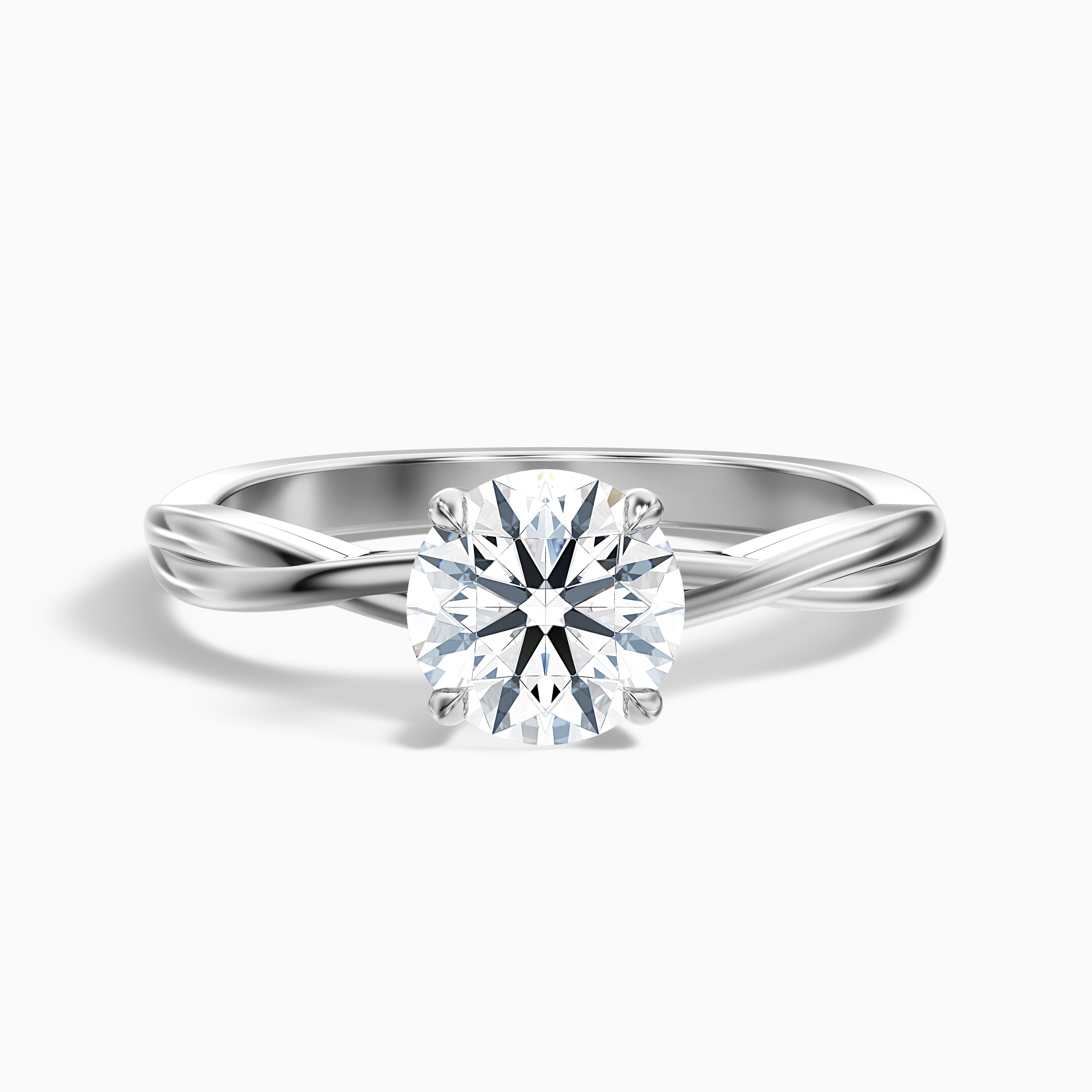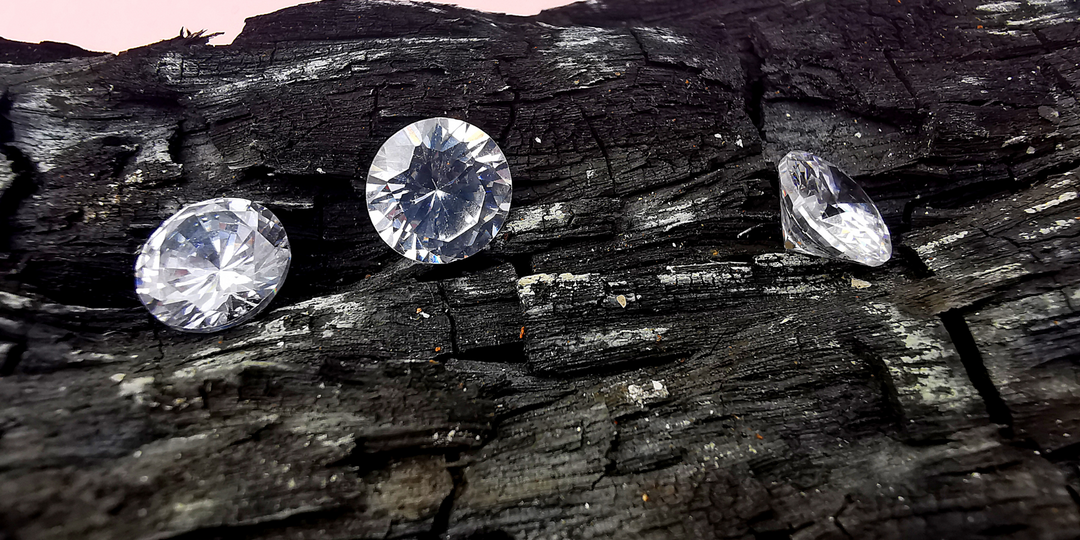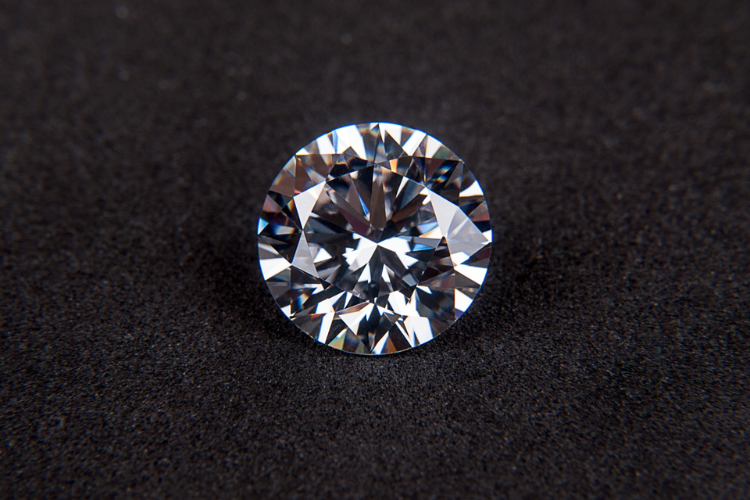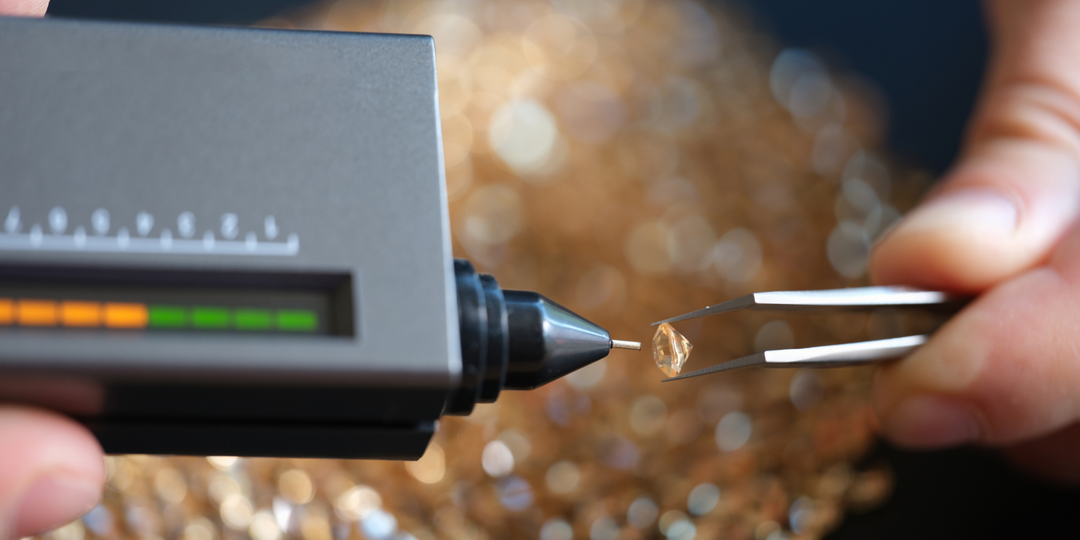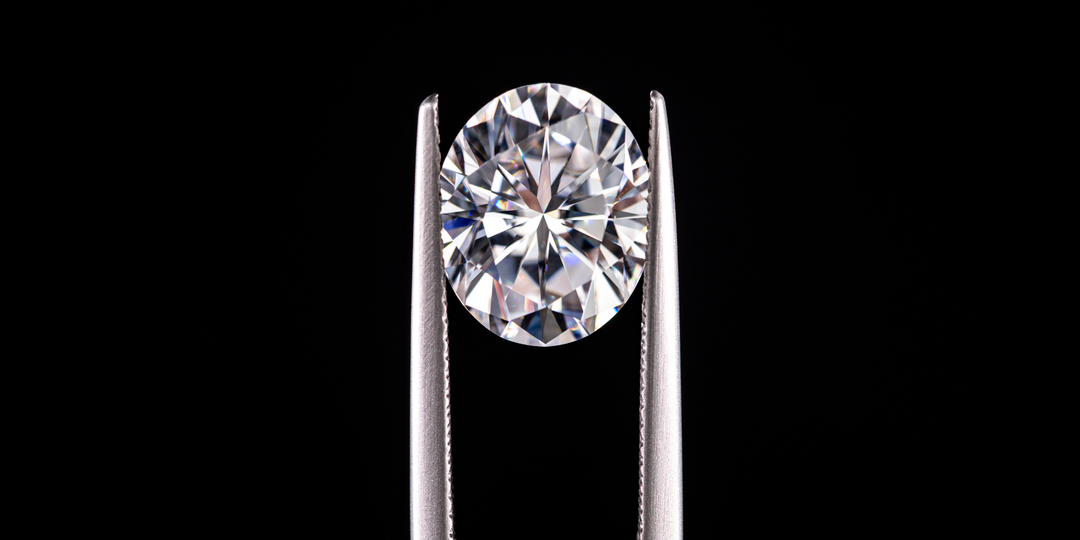4Cs of Lab Grown Diamonds: How to Assess Quality in Your Ring
Thinking of a lab grown diamond ring? These ethically sourced and eco friendly gems are a stunning alternative to traditional mined diamonds without sacrificing on beauty or brilliance. To make an informed decision you need to understand the 4Cs—color, clarity, cut and carat weight. This is especially important when buying a lab grown diamond for an engagement ring.
In this post we’ll go through each of the 4Cs and how they impact on the quality and value of a lab grown diamond. Whether you’re a diamond expert or a first time buyer this guide will give you the knowledge to choose a lab grown diamond ring that fits your style and budget.
What Are the 4Cs and Why Does it Matter?
The 4Cs are the way we measure the quality of a diamond. They stand for Cut, Color, Clarity, and Carat.
- Cut is the proportions and symmetry of the diamond which affects the brilliance and fire.
- Color is the natural color of the diamond, D is colorless and Z is yellow.
- Clarity is the number and size of inclusions (internal flaws) in the diamond.
- Carat is the size of the diamond.
The 4Cs were developed by the Gemological Institute of America (GIA) in 1931. Other gemological institutes like the International Gemological Institute (IGI) and the American Gem Society (AGS) also use the 4Cs. The 4Cs are the foundation for understanding and evaluating diamonds. By understanding each of the 4Cs you can better evaluate the quality and value of a diamond and not overpay. These are industry wide standards.
4Cs are mentioned in diamond grading reports, buying guides, jewelry magazines and websites, news, blogs and academic papers and books.
What Are Lab-Grown Diamonds?
Lab grown diamonds are real diamonds, made in a lab not in the ground. They are chemically and physically the same as natural diamonds but just a different origin.
They are created by replicating the conditions that form natural diamonds underground, heating carbon to high temperatures and pressures until it crystallizes like a natural diamond. Experts can make lab diamonds in any size they want, which is a bonus since larger natural diamonds are rare.
Although they look and feel like mined diamonds, lab grown diamonds are usually more affordable and eco friendly. They are also a more ethical choice, no mining involved and no conflict and environmental harm.
Read More: Lab Grown Diamonds Vs Natural Diamonds: All You Need To Know
Lab Grown Diamond Clarity Chart
Lab grown diamonds, like natural diamonds, are graded for clarity using a standard scale. This scale looks at internal and external imperfections, known as inclusions and blemishes respectively. CVD diamonds are a type of lab grown diamond, grown using the chemical vapor deposition method. Here’s a breakdown of the clarity grades:
Clarity Grades
Flawless (FL): No inclusions or imperfections visible under 10x magnification. This is the highest grade.
Internally Flawless (IF): No internal inclusions or imperfections visible under 10x magnification, but may have surface blemishes.
Very, Very Slightly Included (VVS): Inclusions are very hard to see under 10x magnification, even for trained eyes. This is further divided into VVS1 and VVS2.
Very Slightly Included (VS): Inclusions are slightly visible under 10x magnification. This is also divided into VS1 and VS2.
Slightly Included (SI): Inclusions are visible under 10x magnification and may be visible to the naked eye, but usually don’t affect the diamond’s appearance. This is further divided into SI1 and SI2.
Included (I): Inclusions are visible to the naked eye and may impact the diamond’s appearance. This is further divided into I1, I2, I3.
Clarity Importance & Factors
Why Clarity Matters:
Clarity is key for a diamond's look because inclusions can dull its sparkle, even if you can't see them without a magnifier. Diamonds with higher clarity, meaning fewer and smaller inclusions, are usually more valuable since they're rarer and more sought after.
Factors Affecting Clarity in Lab-Grown Diamonds:
While lab-grown diamonds can be produced with very high clarity, several factors can influence their clarity:
- Growth Conditions: Variations in temperature, pressure, or impurities during growth can lead to inclusions.
- Post-Growth Treatments: Treatments such as laser drilling or heat treatment enhance clarity but can impact value.
- Size: Larger inclusions are more noticeable and affect clarity grade.
- Number: More inclusions = lower clarity grade.
- Location: Inclusions in the center are more impactful than those near the edges.
- Relief: Inclusions that contrast more with the diamond are easier to see.
Lab Grown Diamond Cut Chart
The cut of a diamond is one of the 4Cs to consider when evaluating its quality - it’s part of what’s called the 4Cs. This means the cut is how well proportioned the diamond is, how symmetrical it is and how polished it looks, all of which affects how much it sparkles.
Lab grown diamonds are cut the same way as natural diamonds. But since they can grow in different conditions and sometimes come in larger sizes you may find some unique cut options with lab grown diamonds.
Key Aspects of Diamond Cut
- Proportions: When we talk about proportions we are talking about the depth (height) of the diamond compared to its width. Getting this right helps the diamond shine its brightest and not lose light through the bottom part called the pavilion.
- Symmetry: Symmetry is about how well the two halves of the diamond match up. If they match up nicely the diamond looks more balanced and pleasing to the eye.
- Polish: Polish is about how smooth and well finished the diamond’s facets are. A diamond that’s polished well will reflect more light and look even brighter.
Cut Grades
When it comes to cut grades, they’re usually rated on a scale from Excellent to Poor, with Excellent being the top-notch choice. But keep in mind, some grading systems use different names or get more detailed.
Here’s a breakdown of the common cut grades:
- Excellent: This is where the diamond shines with top-tier proportions, symmetry, and polish, giving you the best brilliance and fire.
- Very Good: These diamonds are pretty close to perfect, with great proportions, symmetry, and polish, but might have a few minor flaws.
- Good: These gems have decent proportions, symmetry, and polish, but you might notice some imperfections.
- Fair: These diamonds are okay, with acceptable proportions, symmetry, and polish, though they might have some significant flaws.
- Poor: These ones miss the mark with really poor proportions, symmetry, or polish, leaving them looking dull or lifeless.
Cut Importance & Factors
Why the Cut Matters
A well cut diamond is a beautiful thing, it reflects light to maximum sparkle. The cut is what creates a diamond’s “fire” which splits the light into colors for that rainbow effect. Even if a diamond has great clarity and color, a bad cut can make it look dull. Conversely a good cut can make it look bigger and more beautiful.
What Affects Cut Quality?
- Proportions: How deep or wide a diamond is can change how much it shines. Get the proportions right and you’ll see less light leakage and more light return.
- Symmetry: A diamond with good symmetry looks balanced and beautiful and catches the eye.
- Polish: The smoother the diamond’s surface the better it reflects light. A well polished diamond is brighter and more vibrant.
- Shape: Different shapes like round, princess or emerald have their own cutting standards and how light travels through the diamond.
Lab Grown Diamond Color Chart
Color refers to the diamond’s natural color, ranging from colorless to yellow or brown. Lab created diamonds can be produced in a wide range of colors, including colorless, fancy yellow, fancy pink, and other fancy colors. The color of a lab-grown diamond is determined by the specific conditions under which it is grown and any impurities introduced during the growth process.

Diamond Color Grading Scale
Lab-grown diamonds are graded just like natural ones, from D (colorless) to Z (light yellow or brown). Here's how the colors break down:
- Colorless (D-F):
- D: Totally colorless. Top of the line and super rare.
- E: Colorless. Only a pro gemologist might spot any color.
- F: Colorless. A tiny bit of color might be detected by an expert, but still counts as colorless.
- Near Colorless (G-J):
- G: Nearly colorless. You'll only notice a hint of color when compared to higher grades.
- H: Almost colorless with a bit more tint than G.
- I: You might pick up a slight color.
- J: More noticeable color than I.
- Faint (K-M):
- K: Has a faint color tint that's noticeable.
- L: Slightly more tint than K.
- M: Tint is more apparent than L.
- Very Light (N-R):
- N-R: Very light color, noticeable yet still lighter than the lower grades.
- Light (S-Z):
- S-Z: Obvious color tint, often yellow or brown.
Color Importance & Factors
Importance of Color
Color makes a big difference in how a diamond looks and how much it’s worth. Most people want colorless diamonds because they’re the most valuable. If a diamond has a visible tint it’s not as desirable. But fancy colored diamonds can be really cool, especially if they’re intense or vivid and can command a high price.
The setting also affects the color; a yellow gold setting can make a near colorless diamond look more colorless, while a white gold or platinum setting will show any color it has.
Factors Affecting Color in Lab-Grown Diamonds:
- Hue: This is the dominant color of the diamond. While most diamonds are graded on lack of color, fancy colored diamonds are graded on hue.
- Tone: This is the relative lightness or darkness of the diamond. Lighter tone is more desirable in colorless diamonds.
- Saturation: This is the intensity of the diamond’s hue. In colorless diamonds lower saturation is preferred, in fancy colored diamonds higher saturation is more desirable.
Lab Grown Diamond Carat
Carat weight is one of the 4Cs (Cut, Color, Clarity, Carat Weight) and is a big part of what determines the size and value of a lab grown diamond. Carat weight measures how heavy a diamond is, one carat is 200 milligrams (0.2 grams). Most lab grown diamonds are inscribed to help identify them from natural diamonds.
Fun fact: the word “carat” comes from carob seeds which were used to weigh gemstones! We measure carat weight to the hundredth decimal place, so if a diamond is 1.25 carats we call it a “one and a quarter carat” diamond.
Carat Importance & Factors
Carat Weight Importance:
A bigger carat weight means a larger diamond, which many people want. But remember, carat weight measures weight, not size. A diamond’s cut can really make it look bigger—a well cut diamond can look bigger than you’d think from its carat weight.
Larger carat diamonds are more valuable but don’t forget the other Cs—cut, color, and clarity. A bigger carat diamond might not be worth as much if it has a poor cut, color or clarity compared to a smaller diamond with great qualities.
It’s all about balancing carat weight with the other Cs. A smaller but great diamond can be way more beautiful than a bigger one.
Also Read
Factors to Consider in Lab-Grown Diamonds:
- Lab-Grown Diamond Carat Weight: Just like natural diamonds, lab-grown are measured by carat weight the same way.
- Pricing: Bigger carats cost more, but lab-grown diamonds give you more for your money. They are cheaper because they are made more efficiently, with no mining costs and risks.
- Shape: The shape of a diamond can make it look bigger. For example, elongated shapes like oval or marquise can make a diamond look larger than it is.
- Cut Quality: A well cut diamond can look bigger and brighter than one that’s not, even if they are the same weight. Cut plays a big role on how light bounces inside it, making it sparkle more.
- Setting: The way a diamond is set can also make it look bigger. For example, the halo setting.
Prioritizing the 4Cs What Matters Most For Lab-Grown Diamonds?
When you’re thinking about lab-grown diamonds, it’s all about the cut. That’s what really makes a diamond shine and sparkle. Sure, color, clarity, and carat weight matter too, but a great cut can make those things less noticeable. Lab-grown diamonds usually have fewer flaws and a more consistent color compared to mined ones, so finding a top-notch stone is easier.
When you’re thinking about lab-grown diamonds, it’s all about the cut. That’s what really makes a diamond shine and sparkle. Sure, color, clarity, and carat weight matter too, but a great cut can make those things less noticeable. Lab-grown diamonds usually have fewer flaws and a more consistent color compared to mined ones, so finding a top-notch stone is easier.
At the end of the day, the best way to figure out the 4Cs—cut, color, clarity, and carat—is to think about what you like, your budget, and the setting you want. Chatting with a jeweler can give you expert advice and help you pick the perfect lab-created diamond.
Conclusion
Choosing a lab-grown diamond? It's all about understanding the 4Cs—cut, color, clarity, and carat. These factors determine your diamond's quality, look, and value. Once you get the hang of these, you can pick a diamond that matches your style and values. Whether you’re into eco-friendliness, size, or sparkle, lab-grown diamonds offer a stunning and ethical alternative to traditional gems. Ready to dive in? Check out our selection of lab-grown diamonds and find your perfect match!


